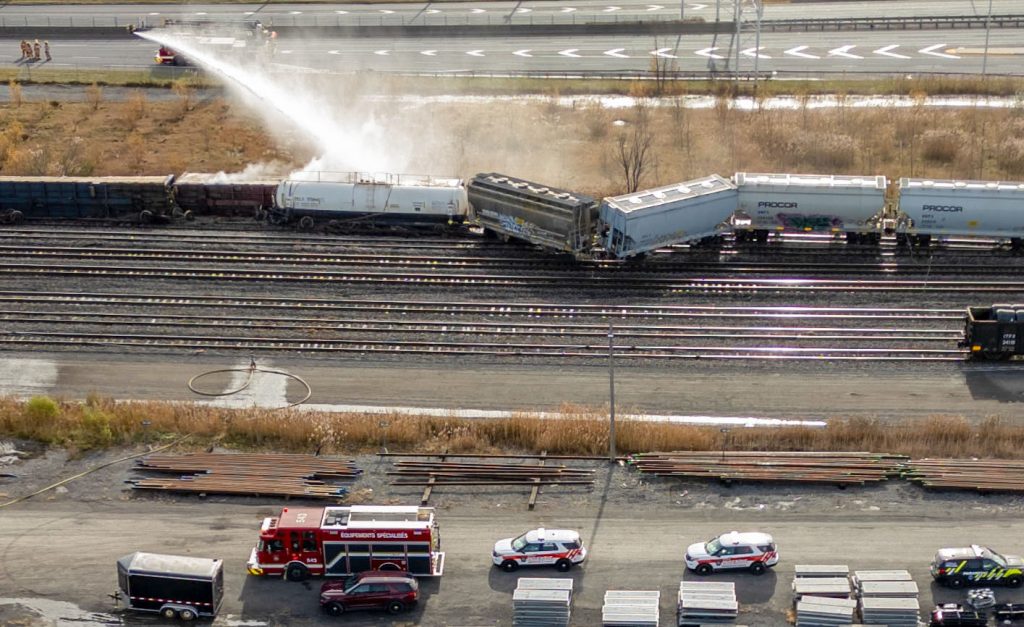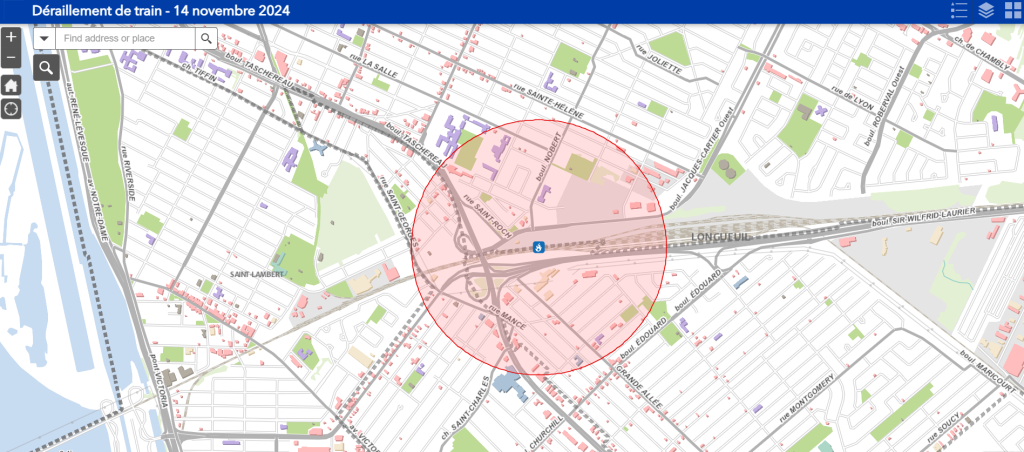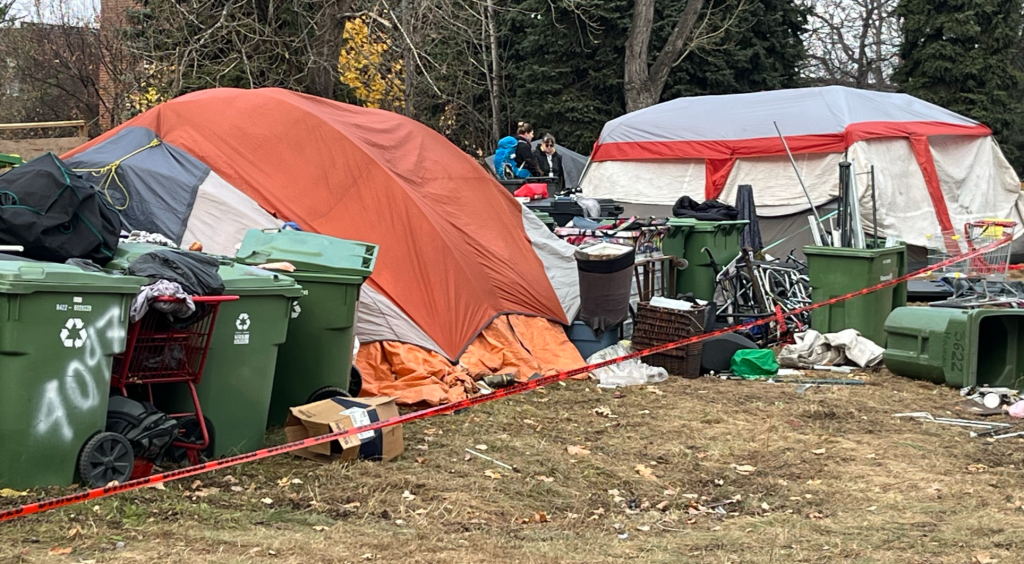‘Situation under control’ after CN train derailment in Longueuil; no injuries reported

Posted November 14, 2024 10:25 am.
Last Updated November 14, 2024 5:06 pm.
Longueuil’s mayor says “the situation is under control” after a train derailed in the Le Moyne sector, spilling an unknown quantity of hydrogen peroxide Thursday morning.
Firefighters “have just stopped watering (the cars),” Mayor Catherine Fournier said during a press conference just before 3 p.m.
The city announced at 4:30 p.m. that it was reducing the size of the confinement perimeter — with residents being asked to close windows and doors — after testing by public health indicated it was safe to do so.
“We are asking people to respect this containment, which is preventive,” said the mayor.
At its largest, the containment area represented an 800-metre radius.
Police from the city just east of Montreal said it didn’t appear anyone was hurt, although a CN rail official told a news conference that three employees had been taken to hospital as a precautionary measure.
The derailment happened at around 9 a.m. in the LeMoyne area, near the intersection of St-Louis and St-Georges streets. Mathieu Gaudreault, a spokesman for CN rail, said about eight cars derailed at the Southwark rail facility, including four that toppled over.
“As of this morning, the information we have is it’s hydrogen peroxide that was in the rail car and created the fumes we saw,” he said, adding that there was no risk of fire.

François Boucher, a spokesman for the Longueuil police department, said police were asking people in the area, including students at nearby schools, to stay indoors while experts ensure the air is safe to breathe.
“It is as a preventive measure that we encourage people to really avoid exposing themselves unnecessarily,” he told reporters near the scene.
Police and fire officials were on site, as well as CN railworkers, and a large security perimeter was erected.
Officers were asking people to avoid the sector, and the normally busy Highway 116 was closed in the area. The confinement notice includes everyone within 800 metres of the derailment, officials said, who added that it would be lifted once a team with expertise in dangerous materials has given the green light.
A daycare centre in the area was evacuated, but only because it was within the emergency services perimeter, according to city spokesperson Raphaël Larocque-Cyr. The nearby Charles-Lemoyne hospital is unaffected.
In addition to closing doors and windows, people in the area covered by the notice are asked to close heating, ventilation and air exchange systems, and to stay as far from windows as possible.
Gaudreault said it wasn’t yet clear what caused the derailment. The possibilities include a problem with the track, a problem with a manoeuvre, or a mechanical issue, he said.
On social media, Public Security Minister François Bonnardel asked the public to follow the instructions and avoid the area.
Rail traffic was interrupted because of the derailment, and two trains were fully cancelled: the 12:30 p.m. train from Montreal Central Station to Mont-Saint-Hilaire; and the 1:45 p.m. train from Mont-Saint-Hilaire to Montreal Central Station.
Public transit operator Exo said alternative transport methods were available. The company also warned that delays of 15 to 30 minutes could occur on bus routes passing over the 116 in this sector.
A chemical product, but manageable
Michel Alsayegh, president of the Ordre des chimistes du Québec, explains that hydrogen peroxide is commonly used in the home, but in lower concentrations. For example, five per cent peroxide is used to disinfect wounds. Higher concentrations are used in the pulp and paper industry.
He suggests that the spilled peroxide is probably in high concentration, which is why the authorities have sprayed the site with water, to dilute it.
Authorities are taking special measures, as peroxide, with certain products, can create unpleasant fumes.
“Because of the high concentration, water is added to dilute the peroxide so that it ultimately becomes something with very little oxidizing and very little danger,” he said.
Alsayegh added that peroxide is not an explosive product. “It’s a chemical that has the potential to be dangerous, but not something that’s going to be considered very dangerous or too dangerous,” he explained.
Nor does he expect an “environmental catastrophe.”
–With files from CityNews and La Presse Canadienne








